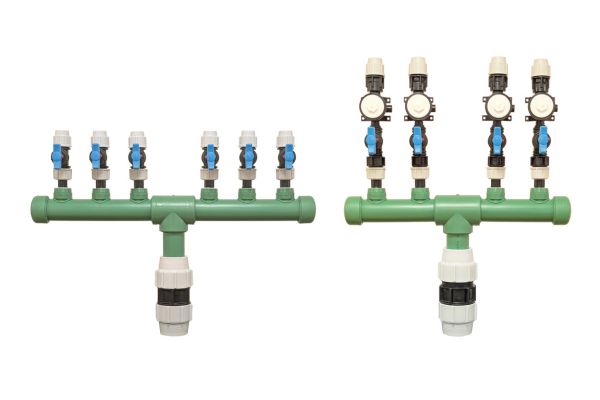Leading supplier of fittings and valves for PE pipe, PLASSON UK, has unveiled its updated range of Below-Ground Manifolds, providing a dedicated, non-metallic solution for efficient external division of mains water pipe.
Compatible with standard-sized inspection chambers, the new Below-Ground Manifolds channel a single 63mm water mains into 4 or 6 individual 25mm outlets, each equipped with a stop tap and optional meter connection point.
Replacing the long-standing black manifolds phased out in March 2024, this next generation combines proven reliability with greater versatility, integrating seamlessly with PLASSON’s extensive portfolio of high-performance fittings, valves, and adaptors.
“Our goal wasn’t just to replace the black manifolds, but to respond to growing demand for efficient, non-metallic infrastructure in residential and commercial developments. The result is a refined, ready-to-use product that’s simpler to install, more adaptable, and connects directly to pipe on site,” said Adam Cafer, Technical Manager at PLASSON UK.
Fabricated in the UK, PLASSON’s Below-Ground Manifolds are supplied fully assembled and pressure-tested, arriving ready to install. This enables short lead times, eliminates the need for complex on-site assembly, and helps keep projects on time.
Key features and benefits include:
- Non-metallic design: Lightweight, corrosion-resistant, and zero-lead
- Mutiple configurations: Available in 4 or 6-ports with optional meter connection
- Arrives ready to install: Fully assembled and pressure tested (PN16)
- Simple on-site fitting: Join to PE pipe on the inlet (63mm) and outlet (25mm)
- Chamber-compatible: Fits into industry-standard inspection chambers
- Reg 4 compliant: Water Supply (Water Fittings) Regulations 1999
The new PLASSON Below-Ground Manifolds are available to order now. Find out more by visiting their interactive catalogue here.




